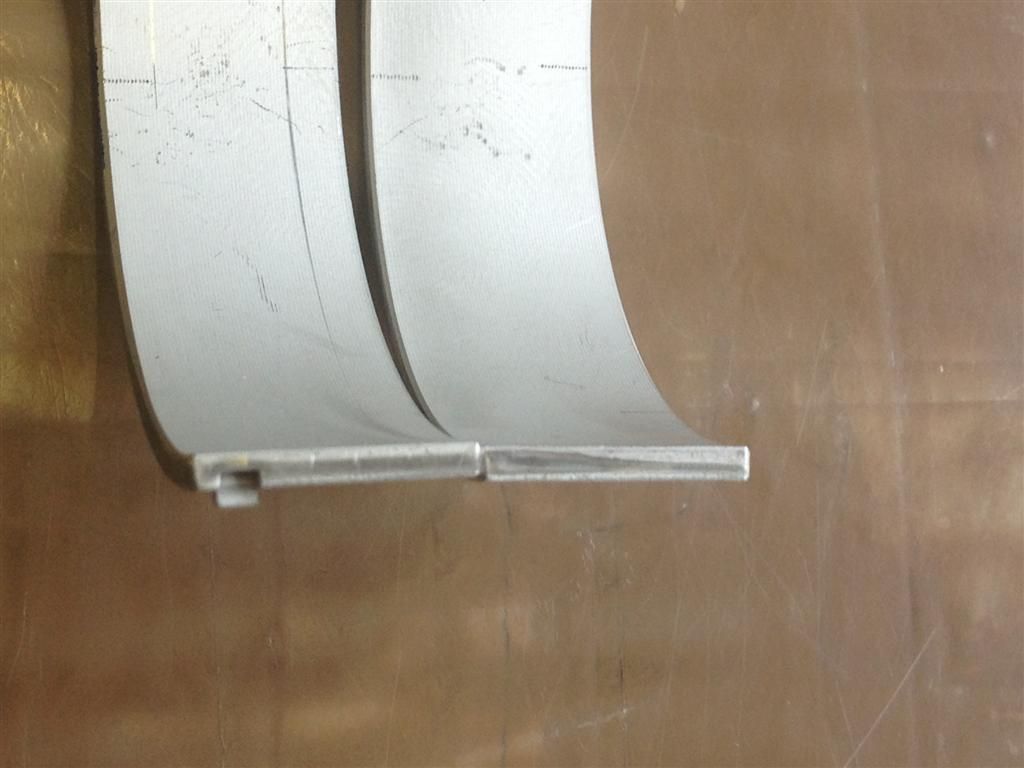Quote:
Originally Posted by Yellow Snow

I have the journal measurements of an S85 (same spec as S65)that I worked on last year. All journals were as near as makes no difference 48.982 diameter. This car showed no abnormal signs of wear at 78k miles, so the old shells went back in.
I also have a new pair of rod bearings in front of me. They are measuring:
.0785" (1.9939mm) in the centre of the blue 703 bearing, .077 ish near the split
.0783" (1.9888mm) in the centre of the red 702 bearing, with .077" again near the split.



Assuming the rod was at mid limit of 53.007mm, this would give a clearance value of .0016" (.042mm) at 90 degrees to the split line. Clearance at the split line oval bore would be .0044" (.11mm)
This clearance seems fair enough for an 8,400rpm motor when allowing for rod stretch.
What concerned me about the bearings is the split lines aren't as flat as they should be. Any good engine builder will wipe a fine stone across the splits before assembly to remove slight burring and subsequent distortion. Was this done at the factory assembly stage?
Both bearings are identical apart from the .0002" thickness reduction. Why do the blues cost 50% more? Different material?
The crank that I measured gave good clearance out of the box. If the journals had been ground to top limit and used with a rod set at bottom limit, clearance would be close to .001"
It would be interesting to see a log file of actual journal measurements from anyone who has the opportunity to mic a crank
Could the sporadic nature of this problem be down to one bad assembly worker |
Here's a couple of things I've learned along the way. Be sure to measure the journals and bearing clearance at the same temperature range -- typically at the same sitting. I've measured them change size with temperature. The rod/bearing bore can't be measured untorqued by subtracting bearing thickness from rod bore diameter. Bearing thickness can't be calculated that way. The rod must be torqued with the bearing in place, and measurements taken with a bore gauge on the assembly. Ideally you would calibrate the bore gauge to actual journal measurement micrometer and then use the bore gauge to show the delta (clearance). Kawasaki and my own engine builder helped steer me in the right direction for best practice in measuring bearing clearance.
Previously, I've posted journal measurements on three different cranks journals. Mics were 0.00005 accuracy. I don't have the links handy at the moment, but they shouldn't be too hard to find. This weekend I'll be finalizing some of the latest measurements with my engine builder and then will be posting the full set of measurements next week on an engine we disassembled a week ago.
Regarding blue/red rod bearings. I don't think anybody here has posted a definitive answer yet. BMW engine builders swear they are different bearings (upper/lower). Here's something I found on another site.
Using a clean-room wipe and isopropyl alcohol, carefully clean each rod bearing (see Photo 4). Install each bearing into the rod cap and rod half. Depending upon which engine you have, there may be upper and lower bearing shell halves (blue for the top side and red for the lower side near the rod cap).
http://www.pelicanparts.com/bmw/tech...d-Bearings.htm
I hope this helps...